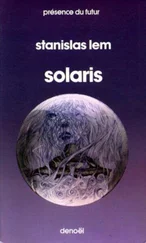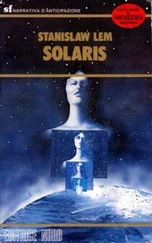I was wearing only underwear and a loose weave tee shirt. I tossed both on the floor like rags and, naked, jumped in the shower. The sudden rush of water felt like relief. I twisted beneath the hard, hot stream of water, massaging my body, snorting, all in a somehow exaggerated way, as if I was shaking off, expelling from myself, the whole obscure uncertainty that filled the Station with its infectious suspicions.
From the locker I dug out a light track suit that could also be worn under a space suit, and transferred all my modest belongings to its pockets. Between the pages of my notebook I felt something hard; it was the key to my apartment on Earth. Goodness knows how it had gotten there. I turned it in my fingers a moment, not knowing what to do with it. In the end I laid it on the table. It occurred to me I might need a weapon. My all-purpose pocket knife certainly wouldn’t do the trick, but I didn’t have anything else, and I wasn’t yet in the kind of mental state that would make me go looking for a ray gun or anything of that kind. I sat on a metal chair in the middle of the open space, far from all objects. I wanted to be alone. I was glad to see I still had half an hour. I couldn’t help it; exactitude in carrying out any commitment, however important or trivial, was always in my nature. The hands of the twenty-four hour clock stood at 7 am. The sun was setting. Seven local time was twenty hundred hours on the Prometheus . Solaris would be shrinking to the size of a dot on Moddard’s screen; it would be indistinguishable from the stars. But what could the Prometheus matter to me? I closed my eyes. There was total silence, aside from the whine of the pipes at regular intervals. Water ticked softly in the bathroom as it dripped into the porcelain basin.
Gibarian was dead. If I’d understood Snaut correctly, less than a day had passed since his death. What had they done with the body? Had they buried it? Oh, right, on this planet that couldn’t be done. I thought about it in a matter-of-fact way for a long while, as if what had been become of the dead man was the most essential thing here, until, realizing how ridiculous these thoughts were, I stood up and began pacing diagonally across the room. With the tip of my foot I kicked at the books scattered about, at a small empty field satchel. I bent down and picked it up. It turned out not to be empty after all. It contained a dark glass bottle that weighed so little it felt like it was made of paper. I held it up to the window, where the last dismal red light of the sunset was blurred by a dirty mist. What was wrong with me? Why was I occupying myself with any old nonsense, with whatever insignificant trifle fell to my hand?
I gave a start — the light had come on. Of course, the photo-cell, triggered by the falling dusk. I was filled with anticipation; the tension had grown to the point where I didn’t want to have open space behind me. I decided to fight it. I moved the chair up to the shelves. I took down a book I knew only too well — the second volume of Hughes and Eugel’s old History of Solaris —and started flipping through it, resting the thick, stiff spine on my lap.
Solaris had been discovered almost a hundred years before I was born. The planet orbits two suns, a red one and a blue one. For over forty years no spaceship came near to it. In those days the Gamov-Shapley hypothesis, concerning the impossibility of life arising on planets around double stars, went unquestioned. The orbits of such planets are constantly changing from the gravitational interplay of two suns circling around one another.
The resulting perturbations successively reduce and expand the planet’s orbit, and the beginnings of life, if they emerge, are destroyed by radiant heat or freezing cold. These changes occur over a period of millions of years, which is to say, on an astronomical or biological scale (for evolution requires hundreds of millions, if not billions, of years) a very short time.
According to initial calculations, in the course of five hundred thousand years Solaris was supposed to move to within half an astronomical unit of its red sun, then after another million years fall into its burning maw.
But only ten or twenty years later it became apparent that the planet’s orbit was not showing the expected changes, exactly as if it were as regular as the courses of planets in our own Solar System.
The observations and calculations were now repeated, this time with the utmost exactness, and they revealed only what was already known: that Solaris possessed an unstable orbit.
From one of several hundred planets discovered yearly and added into the great databases with a few notes concerning the fundamentals of their motion, Solaris advanced to the rank of a body worthy of special attention.
As a consequence, four years after this discovery it was orbited by the Ottenskjold expedition, which studied it from the Laocoon and two accompanying auxiliary ships. This expedition constituted a makeshift, improvised reconnaissance, the more so because it lacked the capability to make a landing. It launched into equatorial and polar orbit a number of unmanned observer satellites whose main task was to take measurements of gravitational potentials. Furthermore, it investigated the surface of the planet, which was almost in its entirety covered by ocean, and the few plateaus rising above it. Their combined area was less than that of Europe, though Solaris was twenty percent larger than Earth in diameter. Those scraps of rocky, desert-like land, scattered irregularly across the planet, were mostly found in the southern hemisphere. Studies were also conducted on the atmosphere, which contained no oxygen, and highly detailed measurements were taken of the density of the planet, as well as its albedo and other astronomical indicators. As expected, no life forms were found either on the land or in the ocean.
Over the following ten years Solaris, now the center of attention of all observatories in the area, demonstrated a remarkable tendency to maintain what was beyond any doubt a gravitationally unstable orbit. For a while there was a hint of scandal in the matter, since (in the interests of science) attempts were made to blame the results of these observations either on certain people, or on the instruments they employed.
A shortage of funding delayed the dispatch of a proper expedition to Solaris for three more years, till the moment when Shannahan, having assembled a crew, managed to secure three C-tonnage cosmodrome class vessels from the Institute. A year and a half before the arrival of the expedition, which set off from the Alpha Aquarii region, a second exploratory fleet put an unmanned Satelloid, Luna 247, in solar orbit on behalf of the Institute. The Satelloid, rebuilt three times over the space of several decades, has continued to work to this day. The data it collected definitively confirmed what the Ottenskjold expedition had observed concerning the active nature of the ocean’s movements.
One of Shannahan’s ships remained at a high orbit while the other two made the necessary preparations and landed on a rocky stretch of ground that occupied about six hundred square miles at Solaris’s south pole. The expedition wrapped up its work after eighteen months; it went well, except for one accident caused by an equipment malfunction. The crew, however, divided into two mutually opposing camps. The object of their disagreement was the ocean. On the basis of their analyses it had been designated an organic formation (at that time, no one dared say it was alive). Yet while the biologists saw it as a primitive being — something like an immense syncytium, in other words a single, monstrously grown, fluid cell (even though they called it a “prebiological form”) that extended across the entire globe in a jelly-like covering whose depth reached several miles in places — the astronomers and physicists, on the other hand, claimed it must be a highly organized structure, perhaps exceeding terrestrial organisms in its complexity, since it was capable of actively influencing the orbit of its plane — for no other cause had been discovered that might explain Solaris’s behavior. In addition, planetary physicists had uncovered a relationship between certain processes in the plasmic ocean and local measurements of gravitational potential, which changed depending on the ocean’s “metabolic rate.”
Читать дальше












